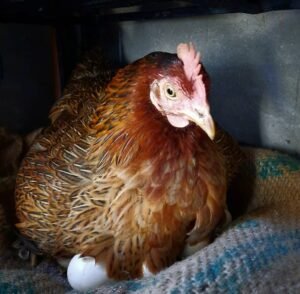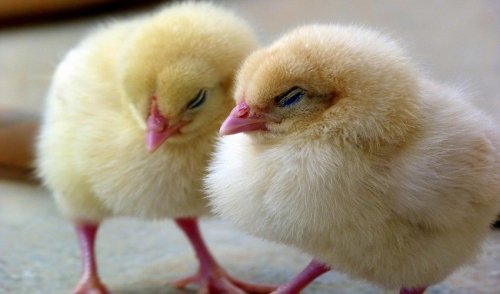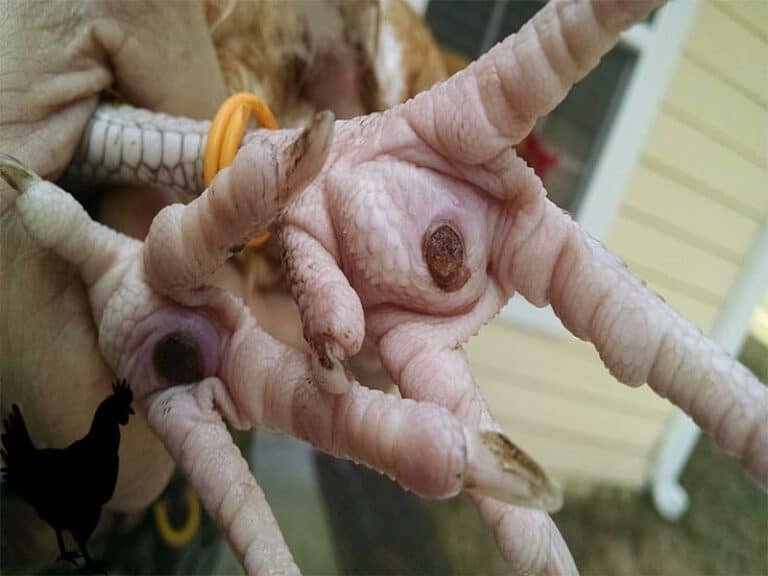16 Myths About Fertilized Chicken Eggs That You Already Believed

Are all chicken eggs fertilized?
Is there a difference between fertilized and unfertilized eggs?
Have you ever wondered how you can tell the difference if there is?
Are you afraid of eating chicken or turkey eggs that already have a chick formation on the inside?
Do you want to verify the popular saying that fertile eggs are healthier than unfertilized eggs?
In this guide, we have demystified a lot of myths in the world of backyard chicken-keeping about eggs and fertility.
Also, we have included how you can tell if an egg is fertile, what you can do with them, and whether they’re safe to eat or not.
Furthermore, we answered all your questions about the fertility of eggs.
In that regard, be ready for an eye-opening experience!
You also like to read about How to Hatch Chicken Eggs Step by Step
What are fertile eggs?
Fertile eggs are where the ‘blastodisc’ turns into a ‘blastoderm’ (the first stage of a developing embryo).
In a more simple term, fertile eggs are eggs that have the potential of becoming a chick.
Day-old chicks come from already fertilized eggs.
An egg is fertilized when chickens mate.
And without a rooster, a hen’s eggs cannot be fertilized.
Does that mean that not all eggs have the potential of becoming chicks?
Yes, not all eggs can become chicks.
The reason is not far-fetched.
They are not fertilized eggs.

16 Myths about fertilized eggs
Over the years, many people have believed some weird things about fertilized eggs.
But the fact is that most of those thoughts are not 100% true.
The weirdest I’ve ever heard is that you can tell whether an egg is fertile or not by swinging a needle suspended on cotton above the egg.
And then I wonder “so how does the fertility result show?”
So in this section, I’m going to bring these myths to your fingertips and guide you into knowing the truth from facts.
Therefore, the myths about fertilized eggs we gathered include;
1. The eggs you buy from the supermarket are fertile:
Any kind of egg you buy from a supermarket is not fertile.
Do not be like my lady friend who bought a crate of eggs from the supermarket and put them in the hatching machine to hatch.
Your guess is as good as mine.
It did not hatch.
Why?
Because supermarket eggs are not fertile.
Commercially produced eggs are laid by hens without access to a male chicken.
And without a rooster, a hen cannot lay fertilized eggs.
People, who read this article also read What Can You Feed Chickens to Make Them Lay Eggs?
2. Hens do not need a rooster to lay eggs:
Yes, furry female buddies do not need a rooster to lay eggs.
All hens are perfectly capable of laying eggs without having to mate.
The kind of eggs birthed in this process are unfertilized eggs.
Those are the commercial eggs you see in the supermarkets.
By nature, all healthy hens start laying eggs at about 21 weeks of age.
Most chicken breeds that lay eggs lay at approximately 24-hour intervals.
3. It is not possible to buy fertilized eggs:
Now, this myth is so wrong.
It’s 100% possible to buy fertile eggs, but not from supermarkets.
In the Philippines, a popular Filipino dish called balut is made from an 18-day-old fertilized duck egg.
However, such eggs are hard to find.
Unless you go to a poultry farmer who already has a hen brooding eggs.
Don’t fail to read this article about the 16 Rare Chicken Breeds in the World [With Pictures]
4. Having a rooster guarantees egg fertilization:
This is a myth because the presence of a rooster in the pen does not mean your eggs will be fertile.
On the flip side, the rooster has to be healthy, fertile, and physically mate with a hen.
This creates a possibility of producing fertile eggs.
To increase the fertility of your flock, try feeding them well using fermented chicken feed and organic feeds.
5. If a rooster mates with a hen, her eggs are always fertile:
Well, that’s not totally true.
Generally, a hen who has mated will remain fertile between 7 and 10 days after.
Naturally, it takes that long for the sperm released during the cloacal kiss to reach the oviduct where eggs are made.
Even if the hen does not mate again, her eggs will remain fertile.
So, the fertility of an egg is not functional in mating.
And just so you know, not all roosters have fertile sperm.
Trending now: Chickens Are Not Laying Eggs Yet? See 15 Common Reasons and Solution
6. I can tell if an egg is fertile by putting it into an incubator without breaking it:
That’s false information.
You can’t tell the fertility of an egg by doing that.
Sadly there is no way to tell about the fertility of an egg before it’s incubated – unless you crack it open.
7. Blood spots on a chicken egg yolk are a sign of fertility:
This is so not true and sadly, my friend Laura fell for it once.
She saw two blood spots on a chicken egg yolk she was using in a cake recipe.
She literally threw the egg away saying it was already forming to become a chick.
Now, she knows that eggs with blood spots are perfectly safe for consumption.
A blood spot on the yolk is also known as a meat spot.
And frankly, it has nothing to do with fertility.
8. Fertilized eggs are not good for consumption:
That’s another false myth.
Fertile eggs are completely safe for consumption.
It is only when the egg is incubated, that the tiny cluster of cells will start to develop.
And regardless of what you read or have heard, you are not eating a baby chick!
Check this out: Top 10 Chicken Breeds That Lay Large Eggs [With Pictures]
9. Fertilized eggs are more healthy:
Although there are some claims that fertilized eggs contain more nutrients than unfertilized eggs.
Fact is, there is absolutely no scientific evidence of a statistically significant difference between fertilized and unfertilized eggs.
10. The white stringy stuff on an egg yolk is a sign of fertility:
No, it is not.
It’s called chalaza.
They’re a normal part of the egg that keeps the yolk in position.
And for the records, it’s perfectly fine to eat and has nothing to do with fertility!
11. Hens can tell if an egg is fertile or not:
This has been a topic of debate for years.
Whether this fact is true or not, there is no conclusive evidence either way.
Most hen behavior seems to indicate that they can tell.
That’s why you see them push unfertilized eggs out of their nest, choosing to warm only viable eggs.
So, it’s possible they can tell the viability of an egg.
But a hen’s behavior shouldn’t be taken as a sure sign that an egg is fertile or not.
Don’t fail to also read about the 15 Most Common Chicken Breeds [With Pictures].
12. Candling can destroy a fertilized egg:
Not at all!! Candling just helps you to detect whether an egg is fertile.
Candling is a process that allows you to see if you have fertilized chicken eggs without cracking them.
All you need to do is check the eggs in a dark room using a bright light.
Hold the egg right up against your light source.
This illumination causes the egg to glow.
If the egg is fertilized, you will see signs of embryo formation or a thin network of veins inside the egg.
Also, you will see a small dark spot as well in the epicenter of the veins.
This is the developing embryo.
However, you will only be able to use the candling technique when the egg is 3 – 4 days of age.

13. You can tell an egg is fertile by looking for the bullseye:
Actually, this one is true.
However, you have to crack the egg to look at the bullseye.
Unfortunately, this means the egg is no longer viable.
So, it is bad advice to look for the bullseye if you intend to hatch the egg.
14. Fertilized and unfertilized eggs taste differently:
Well, this myth has been refuted by scientific studies.
Fertilized eggs do not taste differently nor are they more nutritious than unfertilized ones.
They have the same nutritional value as unfertilized eggs.
15. The color and shape of an egg show fertility:
This is another strong misconception about fertile chicken eggs.
The shape and color of an egg do not indicate the sex and fertility of an egg.
Most people believe that eggs with a point will birth male chicks while rounder eggs will birth female chicks.
Well, there is no scientific evidence to support this claim.
But all fertilized chicken eggs have a 50 – 50 chance either way!
16. Adjusting the temperature of the incubator may affect the sex of the chicks from fertilized eggs:
Here’s another commonly held belief about fertile eggs.
Although there is no scientific proof of this, there is a huge possibility that it is true.
Adjusting the incubator temperature can influence the gender of fertilized chicken eggs.
Setting the temperature ½° higher than is recommended will result in more male chicks.
However, ½° lower will result in more female chicks.
Now you can see that some of these myths are true and scientifically proven.
While on the other hand, some folklore tales have stood as false information for years.
I guess you’re better equipped about what to believe about fertilized eggs.
Conclusion
Fertilized chicken eggs are what continue the generation of birds.
They’re basically one of the reasons why chickens like the Australorps, Serama, and Isa Brown chickens have not gone extinct.
Hopefully, this piece has cleared up all the misconceptions about fertilized chicken eggs.
We would like to hear from you, what misconception you have heard about fertilized eggs.
Drop your view in the comment session!!!
Frequently asked questions about fertilized chicken eggs
How does an egg become fertile?
An egg is only fertile when it’s a product of a rooster and hen mating.
What this means is that fertile eggs are formed when a hen meets with a rooster.What does a fertile chicken egg look like?
To identify a fertile egg, here’s what to do;
Crack the egg into a dish.
Examine the yolk.
See if you can spot a distinctive “bulls-eye” shape on the yolk.
If yes, that means it’s a fertile egg.How do blood spots form in eggs?
Blood spots form in eggs when there is a little rupture in the blood vessel as the egg passes through the hen’s oviduct.
Are eggs with blood spots safe to eat?
Absolutely, they are perfectly safe to eat.
It’s not an indicator of fertility nor does it mean there are bacteria in the egg.
If you’re worried about that simply scoop it out with the tip of a knife or spoon.Does a fertilized egg contain everything for chick development?
Yes, it does.
By design, fertilized chicken eggs provide all the nutrients the chick needs to grow and survive until it hatches.
Chicken eggs contain the essential nutrients for their growth such as 7g of protein, 5g of fat, vitamins, minerals, and other nutrients.
This is enough to sustain the chick till the egg hatches.What’s the difference between fertilized and unfertilized eggs?
There is no other difference between a fertilized egg and an unfertilized egg except for the fact that a rooster is involved in one and not involved in the other.
References
- 12 Best Chicken breeds for Eggs – chicken breeds for eggs
- When Do Chickens Start Laying Eggs Regularly?
- How Many Eggs Does A Chicken Lay In A Week?
- Fermenting chicken feed – The definitive guide
- 10 Sure Ways To Stop Chickens from Eating Their Eggs [+Bonus]
- 6 Best Chicken Egg Incubators for Chicken Eggs and Other Birds











